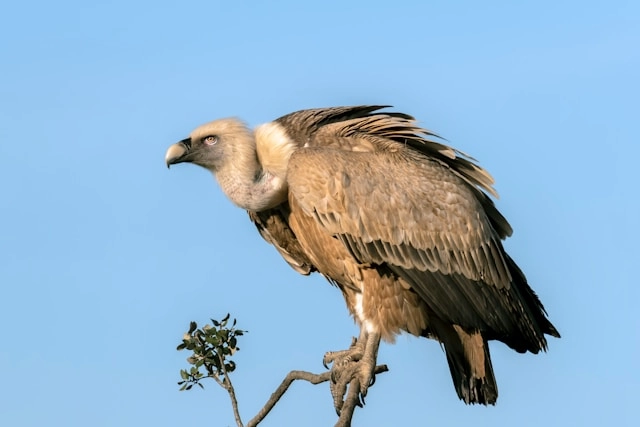Griffon Vulture

📸 Photo by Roberto Navarro on Unsplash
The griffon vulture (Gyps fulvus) is a large Old World vulture with a wingspan of up to 2.8 m. It inhabits mountains, cliffs and open plains from Iberia and North Africa to the Middle East and Central Asia. Feeding almost exclusively on carrion, it plays a key role as a natural cleaner in ecosystems. Populations have recovered in parts of Europe through reintroduction programs.
Where do griffon vultures live?
They inhabit mountains, cliffs and open plains from Spain and North Africa to the Middle East and Central Asia, nesting on high rock faces.
What do griffon vultures eat?
They feed almost entirely on carrion, locating carcasses with keen eyesight. Their digestive system neutralizes bacteria and toxins.
Do griffon vultures migrate?
Most populations are resident, but some move seasonally or disperse widely when young, traveling hundreds of kilometers.
Why are griffon vultures important for ecosystems?
By consuming carcasses, they prevent the spread of disease and recycle nutrients, functioning as natural cleaners in landscapes with livestock and wildlife.
What is the conservation status of the griffon vulture?
The species is listed as Least Concern but remains vulnerable to poisoning, collisions with power lines and food scarcity in some regions.
Technical factsheet
Habitat: The Griffon Vulture can be found in Spain, France, Portugal, Italy, Greece, Croatia, Slovenia, Bulgaria, Turkey, Georgia, Armenia, Azerbaijan, Iran, Iraq, Israel, Jordan, Lebanon, Syria, Palestine, Cyprus, Morocco, Algeria, Tunisia, Mauritania, Mali, Senegal, Ethiopia, Eritrea, Sudan, Djibouti, Yemen, Saudi-arabia, Oman, Kazakhstan, Uzbekistan, Turkmenistan, Tajikistan, Kyrgyzstan, Pakistan, Nepal, India